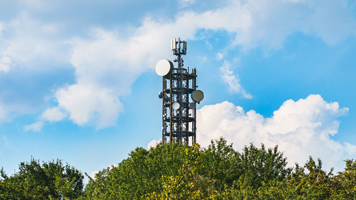Most people may not know this: without data centers, today's level of technological development would be impossible. For these behind-the-scenes heroes, despite some stagnation in overall development in 2022, a series of changes are expected in 2023 to keep the industry on pace with constantly changing technological developments. In the coming year, we can expect the performance, scalability, and sustainability of data centers to continue to grow, and Corning is actively working to provide relevant solutions to promote the industry's development.
Next, this article will detail the four major trends in data center development this year:
2022 is a challenging year for data centers, as supply chain issues have hindered growth, coupled with labor and material shortages, transportation difficulties, and rising costs of components such as power, chips, servers, and switches, delaying deployments originally planned for 2022. These issues have a greater impact on hyperscale data centers and hinder the expansion of some top technology companies closely related to data processing capabilities.
Corning is prepared to meet the higher demand for fiber infrastructure that is expected to arise once large enterprises commence executing their plans in 2023, provided supply chain issues are resolved satisfactorily. The enhanced demand for fiber infrastructure might be due to the widespread use of DCF optical fiber, among other factors, and is expected to bring long-term planning back on track.
The need for constructing new data centers is most pressing when it comes to artificial intelligence (AI) and machine learning (ML) technologies. These technologies, which are frequently integrated into the WDM system, require a significant amount of space within the data centers. Moreover, the data centers must be continuously expanded to meet the power-density requirements of these advanced technologies, which are three times greater than traditional requirements. This also involves the use of more advanced cooling systems to effectively manage the additional heat generated by these technologies.
From a network cabling perspective, an entirely new back-end network must be built to handle inter-device communication. The computation required for AI and ML demands much shared resources, such as computation, storage, and memory, which are distributed among many devices in the compute cluster. The cluster also requires a new cable and switch network to power and communicate between devices in the data center. This configuration previously only appeared in networks of large research institutions such as national laboratories, but now it has become commonplace in the deployment of hyperscale data centers with cutting-edge technologies.
While many data center users are just beginning to consider upgrading to 100G, ultra-high-speed applications are approaching rates close to terabits. Companies who are looking toward the future and interested in building redundancy have already begun considering deploying 800G network switches, and it is expected that these high-bandwidth switches will gradually be put into use over the next few years, with single-channel 800G undoubtedly appearing. Currently, such switches are mainly used in "parallel mode," with the switch divided into two 400G ports or eight 100G ports.
It can be foreseen that some hyperscale data centers will be built in breakthrough, unconventional patterns: consisting of 800G switches and 400G infrastructure. It is expected that there will be significant growth by the end of 2023, thereby driving new cabling patterns to accommodate these fiber optic applications. Corning is participating in early 800G deployments with these customers, developing port decomposer components and modules to help simplify the transition. However, 400/800G is not limited to a large customer base, as some customers who are expanding and upgrading their 100G networks are also expected to adopt some non-traditional methods, partly using 400/800G switches to reduce the cost per link and improve efficiency.
As countries around the world set carbon emissions targets for the end of the century, data centers are being scrutinized more and more. For example, data centers in Ireland consume more than 10% of the national electricity supply, and the local government has issued a new ban: no new data centers will be built in Dublin before 2028. As the call for green energy applications grows, we are concerned that there may be more cities following this ban unless significant progress is made in using sustainable energy to power these facilities.
Currently, renewable energies like solar power are a feasible proposal for smaller data centers in cities. However, the energy required for hyperscale data centers may be as large as a soccer field, requiring a complete dedicated solar power generation field. Considering situations with poor lighting conditions, this requires matching energy storage facilities. In short, we still have a long way to go on the road to promoting sustainable development. 2023 will likely be more focused on the road to green development, and Corning is doing its part by developing new, smaller volume fiber products to help reduce the carbon footprint of data centers, enabling smaller packaging and higher transport efficiency.
Overall, as the demand for remote work grows, high-speed computing technology advances, and the amount of data that needs to be processed daily continues to grow worldwide, the importance of data centers becomes increasingly prominent, and in 2023, we will continue to improve the operation of data centers in multiple ways.

